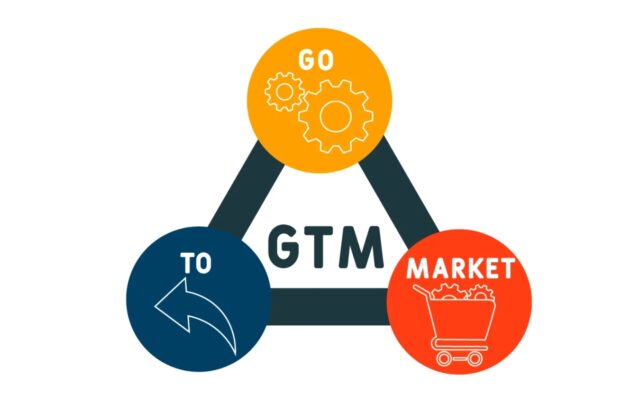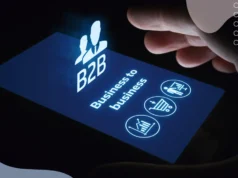
In the dynamic world of B2B SaaS, crafting an effective go-to-market (GTM) strategy is akin to setting the GPS for a successful journey in the digital landscape.
This roadmap not only navigates through the complexities of the market but also ensures that your product reaches its intended audience with precision and impact. Let’s embark on an explorative journey to uncover 10 effective GTM strategies that can propel B2B SaaS companies towards sustainable growth and market dominance.

1. Your Terrain: Market Segmentation
The first step in any journey requires an understanding of the terrain. For B2B SaaS companies, this translates to an in-depth market segmentation. This strategy involves dissecting the market into distinct segments based on various factors such as industry, company size, needs, and geographical location.
The magic lies in tailoring your marketing and sales efforts to resonate with the specific needs and pain points of each segment. By adopting a segmented approach, companies can ensure more personalized and effective communication, leading to higher conversion rates and customer satisfaction.
2. Crafting the Message: Value Proposition
Once the market is segmented, the next step is to craft a compelling value proposition. This is the core message that communicates the unique benefits your product offers, why it’s superior to competitors, and how it solves your customers’ problems.
A strong value proposition is clear, concise, and speaks directly to the needs of your target audience. It’s the hook that grabs attention in the crowded SaaS marketplace, making your product stand out. Developing a compelling value proposition requires a deep understanding of your customers’ needs, ongoing market trends, and the unique features of your product.

3. The Path Less Travelled: Niche Targeting
In the vast expanse of the B2B SaaS market, finding your niche can be a game-changer. Niche targeting involves focusing your efforts on a highly specific segment of the market that is often underserved.
This strategy allows companies to become the go-to solution within a particular domain, reducing competition and increasing the likelihood of customer loyalty. By becoming specialists rather than generalists, B2B SaaS companies can command higher prices, enjoy better customer relationships, and achieve stronger brand recognition within their niche.
4. Digital Footprints: Content Marketing
In today’s digital age, content marketing has emerged as a powerful tool for B2B SaaS companies. This strategy involves creating and distributing valuable, relevant, and consistent content to attract and engage a clearly defined audience. From blog posts and whitepapers to webinars and podcasts, content marketing helps establish your company as a thought leader in your industry.
It builds trust and credibility with potential customers, gently guiding them down the sales funnel. Moreover, it enhances your online presence, boosting SEO and attracting organic traffic to your website.

5. The Social Connection: Leveraging Social Media
Social media is not just for B2C brands; it’s a vital arena for B2B SaaS companies as well. Leveraging social media platforms can help companies increase brand awareness, generate leads, and engage with customers on a more personal level.
Platforms like LinkedIn, Twitter, and even Instagram offer unique opportunities to share content, participate in industry conversations, and showcase your company culture. Social media marketing should be strategic, with a focus on platforms where your target audience is most active, and messaging that resonates with their professional challenges and needs.
6. Partnerships and Alliances
Building partnerships and alliances with other businesses can be a powerful GTM strategy. This approach leverages the strengths, market presence, and customer bases of both parties, creating synergies that can significantly boost market reach and credibility.
Whether it’s through technology integrations, co-marketing efforts, or referral partnerships, these collaborations can open up new channels for customer acquisition and provide validation for your product within the industry.

7. The Power of Free: Freemium Models and Free Trials
The freemium model and free trials have become staple strategies in the B2B SaaS playbook. Offering a version of your product for free or a no-obligation trial period reduces the barrier to entry for potential customers. It allows them to experience the value of your product firsthand, increasing the likelihood of conversion to a paid plan. This strategy also provides valuable insights into user behavior and preferences, informing product development and optimization efforts.
8. Customer Success as a Growth Lever
In the B2B SaaS world, customer success is paramount. This strategy goes beyond customer service, focusing on ensuring customers achieve their desired outcomes while using your product. Implementing a robust customer success program can lead to higher retention rates, increased upsell opportunities, and positive word-of-mouth referrals. It’s about building relationships and becoming an indispensable part of your customers’ success stories.

9. Data-Driven Decisions
In the journey to market dominance, data is your compass. Embracing a data-driven approach to your GTM strategy enables you to make informed decisions based on actual user behavior and market trends. This can range from A/B testing marketing messages to analyzing product usage patterns to identify upsell opportunities. Data helps refine your strategies over time, ensuring they remain aligned with customer needs and market dynamics.
10. Continuous Evolution: Agile Marketing
Lastly, in the fast-paced world of B2B SaaS, agility is key. Adopting an agile marketing approach means being willing to experiment, learn, and pivot quickly based on feedback and results. This strategy encourages a culture of innovation, allowing companies to stay ahead of market trends and continuously refine their GTM strategies. It’s about being proactive rather than reactive, ensuring your company remains competitive and relevant in the ever-evolving SaaS landscape.

Final Words
In conclusion, navigating the B2B SaaS market requires a well-crafted go-to-market strategy that’s as dynamic and multifaceted as the market itself. From understanding your terrain with market segmentation to crafting your message, finding your niche, and leveraging digital and social platforms, each strategy plays a crucial role in guiding your journey.
Building partnerships, embracing the power of free, focusing on customer success, making data-driven decisions, and staying agile are equally vital in reaching your destination. By implementing these effective GTM strategies, B2B SaaS companies can ensure a successful voyage in the competitive digital marketplace, marked by sustainable growth and lasting customer relationships.









